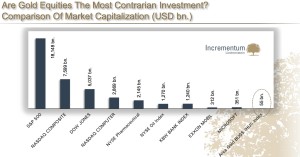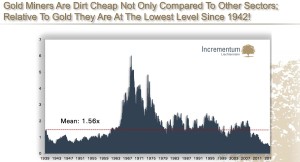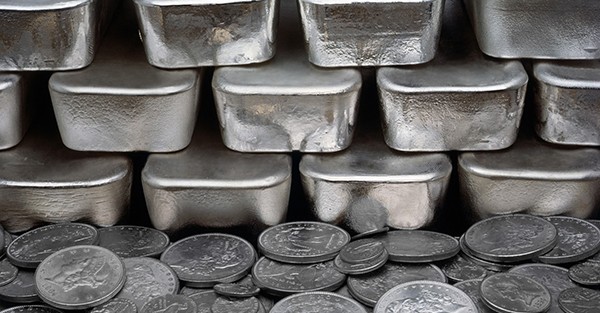Gold stocks soared 600% from 2000 to 2004…
Before then, gold stocks had fallen 84% from 1996 to 2000.
The question is, are gold stocks cheaper today than they were back then?
The answer is YES. Let me explain…
Most investors know that gold is far from its 2011 highs. But I don't think folks understand how far gold stocks have fallen.
The benchmark gold-stocks index – the NYSE Arca Gold Bugs Index ("HUI") – is down more than 75% in four years. Meanwhile, the price of gold only fell around 30% in four years. That's a big divergence. And it has led to a major extreme in the gold-to-gold-stocks ratio.
This ratio is simple… It's the price of the HUI Index divided by the price of gold. Gold stocks are cheap compared with the price of gold when the ratio is low. And they're expensive relative to gold when the ratio is high.
With gold stocks crashing 75% and gold only falling 30%, this ratio recently hit an all-time low. Take a look…
Of course, this isn't a perfect "value" measure for gold stocks. It doesn't take mining costs into account – or any other business costs, for that matter. But it does offer a simple, big- picture view of the industry.
Importantly, the two major bottoms in this ratio led to incredible returns. You can see these bottoms clearly on the above chart – in 2000 and 2008.
If you'd bought gold stocks at each of those bottoms and held for three years, you would have made 418% and 226%, respectively.
We can't know exactly when we've hit bottom. But this shows how much gold stocks can soar when they get going. And after a 75% decline, these kinds of gains are absolutely possible when the next move higher begins.
Importantly, the next move could be here – today. The easiest way to own gold stocks is through the Market Vectors Gold Miners Fund (GDX). It's up slightly since September's low.
We can't know for sure if this is the next big move in gold stocks. But they've been crashing for four years, they're now dirt-cheap, and in the last month they've been moving higher.
This is a somewhat risky bet. But consider shares of GDX today. This is exactly the setup I look for when investing. Check it out.
Good investing,
Steve Sjuggerud








